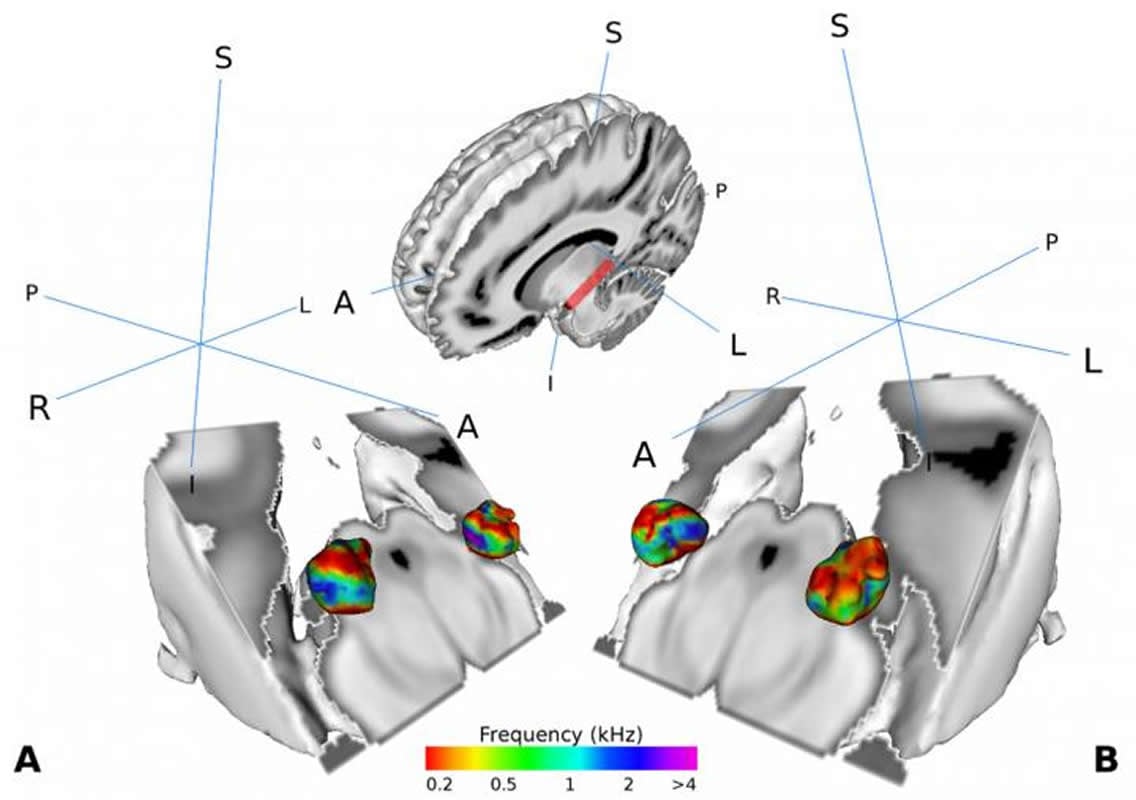Summary: Increased activity of the ventromedial geniculate body indicates the processing of auditory information begins before the auditory pathways reach the cerebral cortex.
Source: TU Dresden
In many households, it is impossible to imagine life without language assistants – they switch devices on or off, report on news from all over the world or know what the weather will be like tomorrow. The speech recognition of these systems is mostly based on machine learning, a branch of artificial intelligence. The machine generates its knowledge from recurring patterns of data. In recent years, the use of artificial neural networks has largely improved computer-based speech recognition.
For neuroscientist Professor Katharina von Kriegstein from TU Dresden, however, the human brain remains the “most admirable speech processing machine.” “It works much better than computer-based speech processing and will probably continue to do so for a long time to come,” comments Professor von Kriegstein, “because the exact processes of speech processing in the brain are still largely unknown.”
In a recent study, the neuroscientist from Dresden and her team discovered another building block in the mystery of human speech processing. In the study, 33 test persons were examined using functional magnetic resonance imaging (MRI). The test persons received speech signals from different speakers. They were asked to perform a speech task or a control task for voice recognition in random order. The team of scientists recorded the brain activity of the test persons during the experiment using MRI. The evaluation of the recordings showed that a structure in the left auditory pathway – the ventral medial geniculate body, (vMGB) – has particularly high activity when the test persons perform a speech task (in contrast to the control task) and when the test persons are particularly good at recognizing speech.
Previously, it was assumed that all auditory information was equally transmitted via the auditory pathways from the ear to the cerebral cortex. The current recordings of the increased activity of the vMGB show that the processing of the auditory information begins before the auditory pathways reach the cerebral cortex. Katharina von Kriegstein explains the results as follows: “For some time now, we have had the first indications that the auditory pathways are more specialized in speech than previously assumed. This study shows that this is indeed the case: The part of the vMGB that transports information from the ear to the cerebral cortex processes auditory information differently when speech is to be recognized than when other components of communication signals are to be recognized, such as the speaker’s voice for example.”

The recognition of auditory speech is of extreme importance for interpersonal communication. Understanding the underlying neuronal processes will not only be important for the further development of computer-based speech recognition.
These new results may also have relevance for some of the symptoms of developmental dyslexia. It is known that the left MGB functions differently in dyslexic persons than in others. A specialization of the left MGB in speech may explain why dyslexic people often have difficulty understanding speech signals in noisy environments (such as restaurants). Katharina von Kriegstein and her team are now going to carry out further studies in order to scientifically prove these indications.
Source:
TU Dresden
Media Contacts:
Katharina von Kriegstein – TU Dresden
Image Source:
The image is credited to Mihai et al.
Original Research: Open access
“Modulation of tonotopic ventral MGB is behaviorally relevant for speech recognition”. Paul Glad Mihai, Michelle Moerel, Federico de Martino, Robert Trampel, Stefan Kiebel, Katharina von Kriegstein.
eLife. doi:10.7554/eLife.44837
Abstract
Modulation of tonotopic ventral MGB is behaviorally relevant for speech recognition
Sensory thalami are central sensory pathway stations for information processing. Their role for human cognition and perception, however, remains unclear. Recent evidence suggests an involvement of the sensory thalami in speech recognition. In particular, the auditory thalamus (medial geniculate body, MGB) response is modulated by speech recognition tasks and the amount of this task-dependent modulation is associated with speech recognition abilities. Here, we tested the specific hypothesis that this behaviorally relevant modulation is present in the MGB subsection that corresponds to the primary auditory pathway (i.e., the ventral MGB [vMGB]). We used ultra-high field 7T fMRI to identify the vMGB, and found a significant positive correlation between the amount of task-dependent modulation and the speech recognition performance across participants within left vMGB, but not within the other MGB subsections. These results imply that modulation of thalamic driving input to the auditory cortex facilitates speech recognition.






